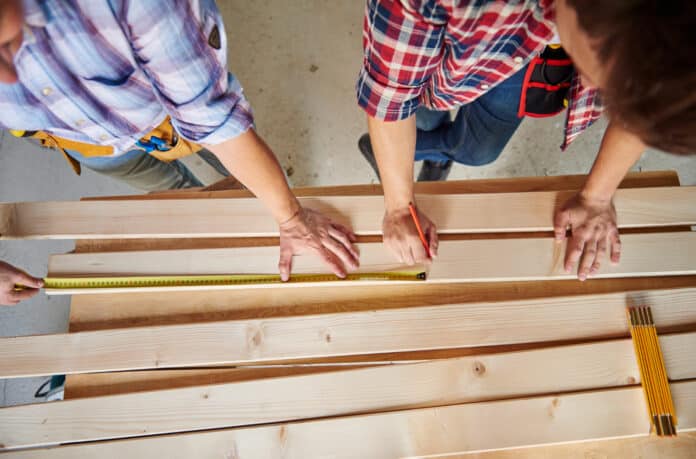Researchers at the Pacific Northwest National Laboratory (PNNL) have designed a composite decking material that stores more CO2 than is required to manufacture it. This provides a “carbon-negative” option that meets building codes and is less expensive than standard composite decking.
Carbon-negative composites are not widely available, as David Heldebrant, an organic chemist involved in a related project, mentioned. He highlighted that their project’s composite decking stands out as one of the very few composite materials that are proven to be CO2 negative throughout its life cycle.
The impact of buildings on the environment is a concerning issue, as the materials and processes used in construction contribute to 11% of all energy-related carbon emissions. Several initiatives have been taken to address this problem, including the development of building supplies that can offset these emissions. However, the challenge lies in the fact that many sustainable alternatives are often more expensive than traditional materials or cannot match their properties, such as strength or durability.
Decking boards made from wood-plastic composite are a great alternative to traditional lumber boards because they are more durable and less prone to damage from UV radiation. Composite decking is typically made from a blend of wood chips or sawdust and plastic, such as high-density polyethylene (HDPE). To make these composites more sustainable, one alternative is to use fillers that are waste products or would otherwise be burned.
Scientists are exploring the use of low-quality brown coal and lignin in decking composites. Heldebrant’s colleague Keerti Kappagantula is working on this approach and has been successful in making pulverized coal and lignin particles mix with and stick to plastics by adding ester functional groups to the particles’ surfaces.
Heldebrant, who specializes in developing liquids to capture CO2 at PNNL, found out about this work while chatting over coffee with Kappagantula. “Esters are essentially carboxylic acids, which are a captured form of CO2,” Heldebrant explains.
The team wanted to make their composite material more environmentally friendly by adding CO2 onto the surface of the particles. They’re also looking to improve the material’s mechanical performance as well.
To achieve this, they used a chemical reaction to form a bond between CO2 and a functional group called a phenol, which is commonly found in wood products like coal and lignin. The resulting lignin and coal particles contained 2-5% CO2 by weight.
Then, the team mixed different ratios of particles with HDPE to create composites that were brownish-black in color. The properties of these composites were then tested, and it was found that a composite made up of 80% filler could maximize CO2 content while exhibiting strength and durability that meet international building codes for decking materials.
The composite was manufactured using PNNL’s shear-assisted processing and extrusion machine, which is known as ShAPETM. This material was then used to create 10-foot-long composites that are similar in look and feel to standard wood composites used in decking and lawn furniture.
The new composite boards offer both physical and financial benefits while also being sustainable. They are 18% cheaper than standard decking composite boards and store more CO2 than is released during their manufacture and lifetime. According to Heldebrant, replacing the 3.55 billion feet of decking sold in the U.S. every year with the new CO2-negative composite decking could sequester 250,000 tons of CO2 annually, which is equivalent to the yearly emissions from 54,000 cars.
Next, the researchers plan to make additional composite formulations and test the properties. They’re working on developing carbon-negative composites that could be used in a variety of building materials. The team is already working on commercializing their decking boards and hopes to make them available to consumers as early as next summer.
